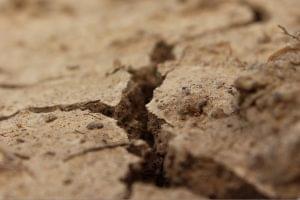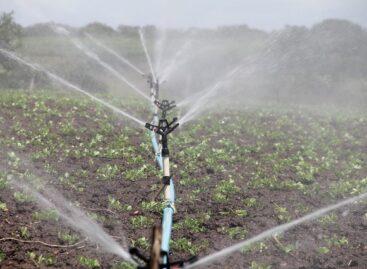According to the OVF, this year’s drought was severe, but not extraordinary
Although this year’s drought was very severe, it cannot be considered extraordinary: droughts of similar severity occur in Hungary every 20-50 years – states the National Water Directorate General (OVF) in its analysis published on its website.

In recent centuries, periods of drought have occurred relatively regularly (Photo: Pixabay)
In the eight hundred years between the 11th and 19th centuries, about thirty extremely severe droughts were recorded, during which the water level of our larger rivers dropped significantly, most of the livestock died and famine struck. The droughts of 1794 and 1863 were considered to be the largest ever, they wrote.
The 20th century was not without droughts either, between 1930 and 2000 there were 33 years that could be classified as droughts
Droughts in 1904, 1935, 1952 and 1990 were severe. 1952 stood out by far among them: between June 27 and August 17, the amount of precipitation did not even reach ten percent of the long-term average, and exceeded fifty percent only in small spots. The drought significantly contributed to the formation of the lowest point in the standard of living in 1952, and in the first months of 1953 there was a food shortage – they recalled. According to the analysis, this year’s drought can be considered the most serious of the 21st century. (Already in 2020 and 2021, the amount of precipitation was below the long-term average, and there were long heat waves in the summer.) The amount of precipitation in the agricultural year was extremely low, only 275 millimeters in Szeged, which is half of the long-term average, and elsewhere it barely exceeded 300 millimeters.
On the Danube, the Tisza and the Drava, the spring tide was missed
Extremely low water levels and flows were experienced on all three rivers. In February, the lowest water level measured until then fell on the Drava, but values close to the lowest water levels were also measured on the Danube and the Tisza. The average monthly temperatures of the winter months were around 1-6 degrees Celsius, the average temperature in July was 24.7 degrees, which is almost three degrees higher than the long-term average. According to the first estimates, as a result of the drought, one million hectares were affected by drought damage, and in the case of sunflower, the crop loss is approximately fifty percent – they wrote. It was noted that 1794, 1863 and 2022 were all preceded by a dry period. Before 1794, there was already a drought in 1790 and a drought in 1793, with almost completely rainless autumn-winter weather. Before 1863, 1861 and 1862 were also dry. Similar to these years, in 2020 and 2021 prior to 2022, less precipitation fell than the long-term average, and this year it is about 45 percent less than the long-term average. The analysis draws attention to the fact that the meteorological drought (the lack of precipitation) was combined with a hydrological drought in all three cases, i.e. the water flow of the rivers was below normal. The same can be seen during the current drought: since 2017, Hungary’s rivers have not experienced a major tidal wave, in 2022 the maximum water level could be measured, while by July the negative water level records were broken.
The third factor in the development of drought is unusually warm weather
In 1794 and 1863, very mild winters and extremely hot summers were typical, just like in 2022. This year’s drought can be considered very serious, but it did not reach the level of the most severe, truly catastrophic droughts experienced so far. “This also means that a more severe drought than the current one will most likely occur,” they noted. They wrote that, although in the past the river controls were usually identified as the cause of the drought, historical data show that the country was regularly affected by drought even before the river controls, therefore the “back-winding” of the rivers is not a solution to the drought, as the rivers drastically does not compensate for its decreasing water flow. The retention and storage of water does not promise to be an effective solution either, as the most significant droughts occur with low river flows, when there are no spring floods and there is no inland water to be stored – they wrote, noting that this does not mean that the waters should not be to hold back. They added that, according to experts dealing with the issue of drought, forests can play a greater role in improving the climate at the local level, by breaking the force of the wind, promoting evaporation and cloud formation, and lowering the temperature. A more effective solution than irrigation can be to raise the groundwater level, which can even be achieved by storing water in the channel bed (bed storage), because the water leaking from the bed can significantly raise the groundwater level even at a distance of about five hundred meters from the bed. It can also help if the water or floodwaters of the wetter years are returned to the soil with draining fields, but efforts must also be made to utilize the water that has been wasted so far – for example, the stormwater runoff from urban areas.
MTI
Related news
Tesco faces uncertain future in Central Europe
Tesco’s business in Central Europe faces significant challenges. In its…
Read more >World Water Day: Proper water management is particularly important due to climate change
Water is a natural treasure that we must take extra…
Read more >Let’s keep water in the landscape! NAK is conducting a survey among more than ten thousand farmers operating in low-lying areas
The network of village farmers of the National Chamber of…
Read more >Related news
The quarterly results of the SZÉP card confirm the entrepreneurs’ proposal
According to the announcement issued by the Ministry of National…
Read more >Fish production in Hungary: the industry is struggling with a growing labor shortage
Despite low feed prices and good water levels, the Hungarian…
Read more >Artificial intelligence in winemaking: new technology is changing the way wine is made
Artificial intelligence is revolutionizing American winemaking, enabling remote monitoring of…
Read more >







